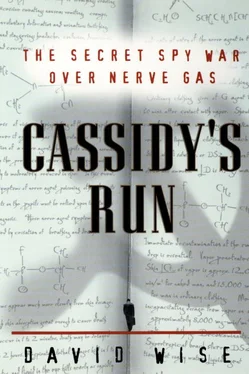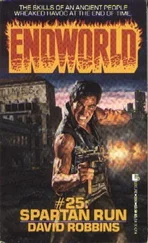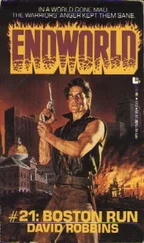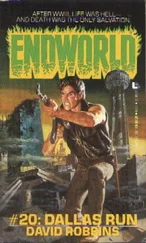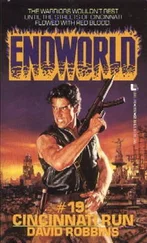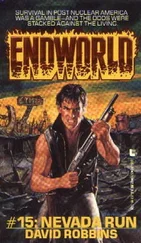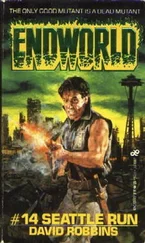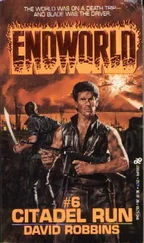Robert and Jill Freundlich were generous in sharing their recollections and photographs of Edmund Freundlich, IXORA. I very much appreciate the confidence they placed in me. Two former executives of Pergamon Press, Laszlo Straka and Robert Miranda, as well as Lori Miranda, filled in details about Edmund Freundlich’s work at the publishing house.
Because the deception over nerve gas was central to the early stages of the operation, I needed to know much more about the secret research in chemical weapons conducted in this country and the former Soviet Union. I was able to find and speak to many scientists who had worked at Edgewood Arsenal, as well as Soviet scientists who had participated in their country’s counterpart nerve-gas program.
My thanks in particular go to Saul Hormats, Benjamin L. Harris, William J. Weber, Jefferson C. Davis, Jr., Bernard Zeffert, and Edmund H. Schwanke. I was helped as well by some current officials at Edgewood, including Jim Allingham; Jeff Smart, the base historian; and William C. Dee, former manager of the binary nerve-gas program. Professor Matthew Meselson of Harvard provided an overview of this country’s nerve-gas research and history. Other data was made available by Charles A. Duelfer of the United Nations Special Commission on Iraq.
I am especially indebted to Vil Mirzayanov, who provided detailed information about the Soviet nerve-gas program at considerable personal risk, and to his former wife, Nuria, as well as to Gale M. Colby and Irene Goldman. In Moscow, Lev Fedorov also shared his knowledge about Soviet nerve-gas weapons.
My research in Moscow also benefited from interviews with General Georgy Aleksandrovich Mikhailov, deputy director of the GRU for ten years in the 1980s; Georgi Arbatov, director of the USA-Canada Institute; Yuri G. Kobaladze and Oleg Tsarev of the SVR, the Russian intelligence service; and Mikhail P. Lyubimov and Boris A. Solomatin, former senior officers of the foreign-intelligence directorate of the KGB. I had generous help as well from Joseph Albright and Marcia Kunstel, then the Cox Newspapers’ correspondents in Moscow. Yuri H. Totrov, a former KGB counterintelligence specialist, was interviewed in Washington, and Victor Gundarev, a former KGB officer now living in the United States, provided additional data.
My special thanks also go to Taro Yoshihashi, the former double-agent specialist for the army chief of staff for intelligence, who patiently walked me through the complex web of secret boards that created and approved deception operations for the Pentagon. Brigadier General Charles F. Scanlon, former head of INSCOM, the army intelligence command, provided valuable guidance in the early stages of my research. Henry A. Strecker, another former army intelligence official, was also helpful, as were Harold F. St. Aubin, a former chemical- and biological-warfare specialist for the Defense Intelligence Agency, and several former officers of army intelligence. I also appreciate the efforts of Kenneth Bacon on my behalf.
Several colleagues of Gilberto Lopez y Rivas at the University of Minnesota were kind enough to share their recollections of him. They included Arturo Madrid, Frank Miller, Manuel Guerrero, Alfredo Gonzales, and Rolando Hinojosa-Smith.
Several friends and former colleagues helped generously, and I am particularly grateful to them. They include Thomas B. Ross, my coauthor on three books; Andrew J. Glass, senior correspondent of the Cox Newspapers Washington bureau; and Joel Seidman.
Morton H. Halperin, Kenneth C. Bass III, Mark Lynch, Kate Martin, Robert L. Keuch, and Jonathan R. Turley all helped me to understand the rapidly changing laws, Supreme Court decisions, and presidential orders governing the FBI’s warrantless investigative techniques during the period covered by this book. I am grateful for their advice on this complex subject.
Kristin Kenney Williams assisted in some of the early research, particularly in tracking down sources at the University of Minnesota who helped me to conclude that PALMETTO, whose identity I did not then know, was Professor Gilberto Lopez y Rivas. My thanks go to her, as well as to my brother, William A. Wise, who located the former executives of Pergamon Press and assisted with other research.
This is the eighth book on which I have been fortunate enough to have Robert D. Loomis, vice president and executive editor at Random House, as my editor. His talent is legendary, and deservedly so. I am grateful for his steadfast support on this book, which is dedicated to him, and for his friendship of more than three decades.
Finally, I am indebted, as always, to my wife, Joan, and to my two sons, Christopher and Jonathan, all of whom provided valuable advice and counsel along the way.
—David Wise Washington, D.C. June 16, 1999
DAVID WISE is America’s leading writer on intelligence and espionage. He is coauthor of The Invisible Government , a number one bestseller that has been widely credited with bringing about a reappraisal of the role of the CIA in a democratic society. He is the author of Nightmover: How Aldrich Ames Sold the CIA to the KGB for $4.6 Million; Molehunt; The Spy Who Got Away; The American Police State; and The Politics of Lying and coauthor with Thomas B. Ross of The Espionage Establishment; The Invisible Government; and The U-2 Affair . Mr. Wise has also written three espionage novels, The Samarkand Dimension; The Children’s Game; and Spectrum . A native New Yorker and graduate of Columbia College, he is the former chief of the Washington bureau of the New York Herald Tribune and has contributed articles on government and politics to many national magazines. He is married and has two sons.
OTHER BOOKS BY DAVID WISE
NONFICTION
The U-2 Affair (with Thomas B. Ross)
The Invisible Government (with Thomas B. Ross)
The Espionage Establishment (with Thomas B. Ross)
The Politics of Lying
The American Police State
The Spy Who Got Away
Molehunt
Nightmover
FICTION
Spectrum
The Children’s Game
The Samarkand Dimension

Copyright © 2000 by David Wise
All rights reserved under International and Pan-American Copyright Conventions. Published in the United States by Random House, Inc., New York.
Wise, David.
Cassidy’s run: the secret spy war over nerve gas / David Wise.
p. cm.
1. Espionage, Soviet—United States—History. 2. Cassidy, Joseph Edward. 3. Chemical weapons—United States. 4. Biological weapons—United States. 5. Intelligence service—United States. 6. United States. Federal Bureau of Investigation. I. Title.
E839.8.W55 2000 327.1247’073—
dc21 99-15802
Random House and colophon are registered trademarks of Random House, Inc.
Random House website address: www.atrandom.com
FIRST EDITION
eISBN: 978-0-375-50536-2
v3.0
Williams and Jack Coler, another FBI agent, had both been killed in a June 1975 shootout at the Oglala Sioux reservation, the scene of a seventy-one-day siege in 1973 by supporters of the American Indian Movement (AIM). Dozens of AIM activists shot at the agents’ car; one, Leonard Peltier, was convicted and sentenced to life. His conviction became a cause célèbre for Robert Redford and other supporters, including the Dalai Lama, who argued that Peltier deserved a new trial.
Читать дальше
